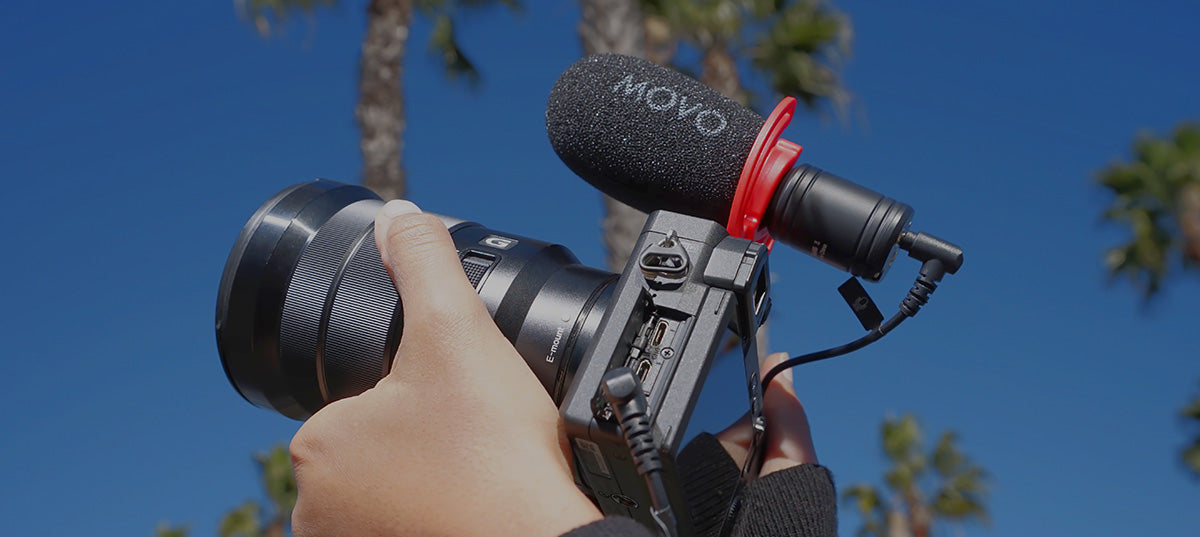Your Cart is Empty
 Free Shipping
Free ShippingEnjoy the convenience of free shipping on all orders. We believe in transparent pricing and delivering value straight to your doorstep. read more...
 30-Day Money-Back Guarantee
30-Day Money-Back GuaranteeShop with confidence knowing you have a full 30 days to try our products. If you're not completely satisfied, return your purchase for a full refund, no questions asked. read more...
 2-Year Warranty
2-Year WarrantyWe stand by the quality of our products with an industry-leading 2-year warranty. Enjoy peace of mind knowing your vlogging and podcasting equipment is covered against defects and issues. read more...
 Lifetime Customer Support
Lifetime Customer SupportOur commitment to you doesn't end at purchase. With lifetime customer support, you can reach out to our expert team anytime for help, advice, or troubleshooting, ensuring you always get the best performance from your gear. read more...

by Tycho Smith April 11, 2018
Making professional-grade audio for video can be rough as there are so many factors to consider, and quite a few types of microphones to choose from. What if you are just starting, and all you have is a shotgun microphone?
Instead of showcasing various types of microphones and their pros and cons, we are going to be realistic about what you can do to make the most out of the shotgun mic that you already have.
It is pretty straightforward how the shotgun mic got its name, because the long and slender tube resembles the barrel of a shotgun. This peculiar shape makes shotgun mics highly directional.
What it means is when you “aim” it accurately (like a shotgun), you will get a clear sound, as the long “interference tube” rejects sounds towards the sides and back.
The best placement of a shotgun mic is on a “pistol” grip held by hand or on a boom, being aimed at the sound source. The worst place for a shotgun is on a DSLR camera, because it limits the angle adjustment to aim your mic.
In most cases, recording sound on location is very difficult due to background noise. The design of the shotgun mic helps screen out the sounds from the sides and the back, making them a popular choice for this type of production. However, if you use your mic a lot, you probably have noticed some inconsistency: sometimes the shotgun mic works better than other times on location.
To understand that, you need to understand the design of the interference tube. But long story short:
AIMING IS EVERYTHING
Shotgun microphones are meant to be highly directional which means where you aim it you will get a clearer sound.
BE MINDFUL OF WEATHER
Shotgun mics powered by internal batteries may be adversely affected under extereme weather conditions.
USE A FOAM WINDSCREEN
ALWAYS use a foam windscreen. This will protect your audio recording from noisy wind interference.
CARPETS ARE YOUR FRIEND
Recording audio in a room with carpets can help reduce echos that can otherwise be picked up by your shotgun mic.
Shotgun mics are perfect for video interview recordings – because of its capability to capture clear sound at a distance, the mic can be positioned perfectly out of the video frame. For indoor interviews, echo can become an issue using long shotguns. Short shotguns can be a better solution.
If the interview takes place at a fixed location, you can mount your microphone at the end of a long stand on an elevated tripod. The ideal distance is about 2 to 3 feet overhead. In other cases, you can have a boom operator to hold the shotgun mic.
LONG VS. SHORT MICS
Choosing which length shotgun microphone to use depends on your recording enviroment and location.
Although we mentioned in the location production (#1 use case) that the worst placement of a shotgun mic is on the DLSR camera, this placement is often favored by the vloggers, because it makes your videos appear natural when you blend in with the environment. Most of the quick pro tips apply here as well.
For vloggers in the field, although you may not have a big crew, or a boom operator to help carry and aim the shotgun mic, you can mount your mic on the camera directly.
In order to make great, high quality videos, you can't neglect the audio production. This list is intended to help you analyze your recording enviroment and choose the best microphone for your situation. Choosing the right equipment is a critical step in improving the quality of your video production.
Audio in video production is critical, and yet often neglected. If you are just getting started with video production and have a shotgun, we hope you have gotten a treasure load of ideas from this article to make the most out of your mic.
If you are ready to test some other types of microphones, you can always reach out to us by using the chat box or giving us a call.
We’re a team of creators and entrepreneurs who proudly support the content creation community through innovative, high-quality products that let you do you. From filmmakers to photographers, vloggers to podcasters, and beyond, Movo helps you share your creative voices across countless mediums and content platforms everywhere.
Receive access to exclusive deals, updates, and more.
